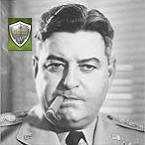ORIGINAL: Curtis Lemay
I'm like Karri. I don't see the issue. Amost every piece of equipment in the game has an AA value and an AP value. Not just flak. They're employed in different phases of the combat round. What prevents anything from firing at the ground units at one point, and firing at the bombers the next?
Because where the bombers are, and where the ground units are, aren't necessarily the same place -- nor would the ideal deployment for engaging ground targets necessarily be the ideal deployment for engaging bombers.
I already cited the fall of Tobruk in 1942, where there was plenty of Allied Flak -- just not where the ground combat was.
Let's look at Sedan. On May 14, the French were mounting various attacks from what would be the next hex at most scales, while the Germans were attacking out of that hex to expand their bridgehead. At the same time, an immense concentration of German flak was protecting the bridges themselves against furious Allied air attacks, allowing reinforcements to move into 'the hex' and win the ground battle.
Those flak guns didn't engage the counterattacking French units. They guarded the bridge. Had they been used to engage the counterattacking French units, they couldn't have protected the bridge.
I think you'll find that over and over, a weapon can only do one thing at a time. Since attackers have a nasty habit of doing several things all at the same time, more often than not, the weapon can only be utilized against one of the incoming forms of attack.
Now, in an ideal world, one could have a designer-modified value that would allow a weapon to be used in a secondary role -- artillery as AT, AA as ground support -- if the force in question in fact usually displayed such flexibility and if the weapon system wasn't performing its primary role. Your 25 Pounder Regiment can be used as AT -- if it's not providing indirect fire support that turn.
However, TOAW isn't even close to that level of sophistication. So pending that, weapons -- and men -- should be assumed to be performing their primary role.
As a general rule, of course. What should NOT be a general rule -- but is, in TOAW -- is that the flak is always there to help out the ground assault as well as fend off attacking aircraft. That just isn't what happened. It was always doing one or the other -- but only one.
In
Seelowe, the British have various 40 mm AA batteries. Given British doctrine at the time, and given German air superiority, the reasonable assumption is that those AA guns would have spent most of their time trying to fend off the
Luftwaffe. It would have been rare for them to help support an attack, and it also would have been unusual for them to be pressed into service as AT guns.
So given OPART's limitations, I felt -- and still feel -- the most appropriate way to handle them was to give them zero AP and AT strength.
They can only be used as AA guns. That's what they mostly would have done. That may not be a perfect reflection of what would have happened, but it's a damned sight closer than letting them
routinely do precisely what they rarely did in 1940 -- support ground attacks and beat back panzers. To treat them otherwise is to give the British a weapon they would not in fact have had.




